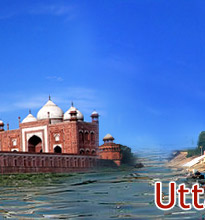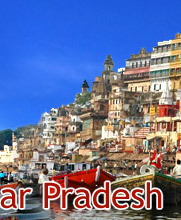 Mahoba
has a long history to boast about. The city has been under the rule of
different dynasties in the course of history. Nevertheless, the city has
been associated to Chandela Rajputs who ruled Bundelkhand for long.
Before the advent of Chandela Rajputs, Pratihara Kings ruled the regions
in and around Mahoba.
Mahoba
has a long history to boast about. The city has been under the rule of
different dynasties in the course of history. Nevertheless, the city has
been associated to Chandela Rajputs who ruled Bundelkhand for long.
Before the advent of Chandela Rajputs, Pratihara Kings ruled the regions
in and around Mahoba.Chandela rulers ruled Mahoba in 11th and 12th century after which, the town fall to Prithvi Raj Chauhan, the ruler of Ajmer and Delhi. The battle that was fought between the parties is especially known for the heroics of two Chandela generals Alha and Udal. In fact, the heroics of these brothers have now become the inseparable part of the folklores in India. The town also passed on to Delhi Sultanate and Mogul Empire and was later annexed by Marathas. The town finally passed to British in the year 1803 under the very famous 'Treaty of Bassein'.
The town has numerous water reservoirs built by the then Chandela rulers that are worth watching. It was done in order to solve the water problem of largely arid Bundelkhand region. In fact, this effort can be considered as one of the first water conservation schemes, initiated by any ruler in India. The finest among these are Vijaya Sagar, Kirat Sagar and Madan Sagar. There are other attractions in Mahoba too. These include the very famous 9th century Sun Temple built by Chandela King Rahila. This granite temple is one of the finest examples of early Pratihara architecture.
Apart from that there is Gokhar Hill that is famous as the place where Baba Gorakhnath took shelter along with his disciples. The site is frequented by the followers of Nath sect of Hinduism that stresses heavily on Tantrism.









